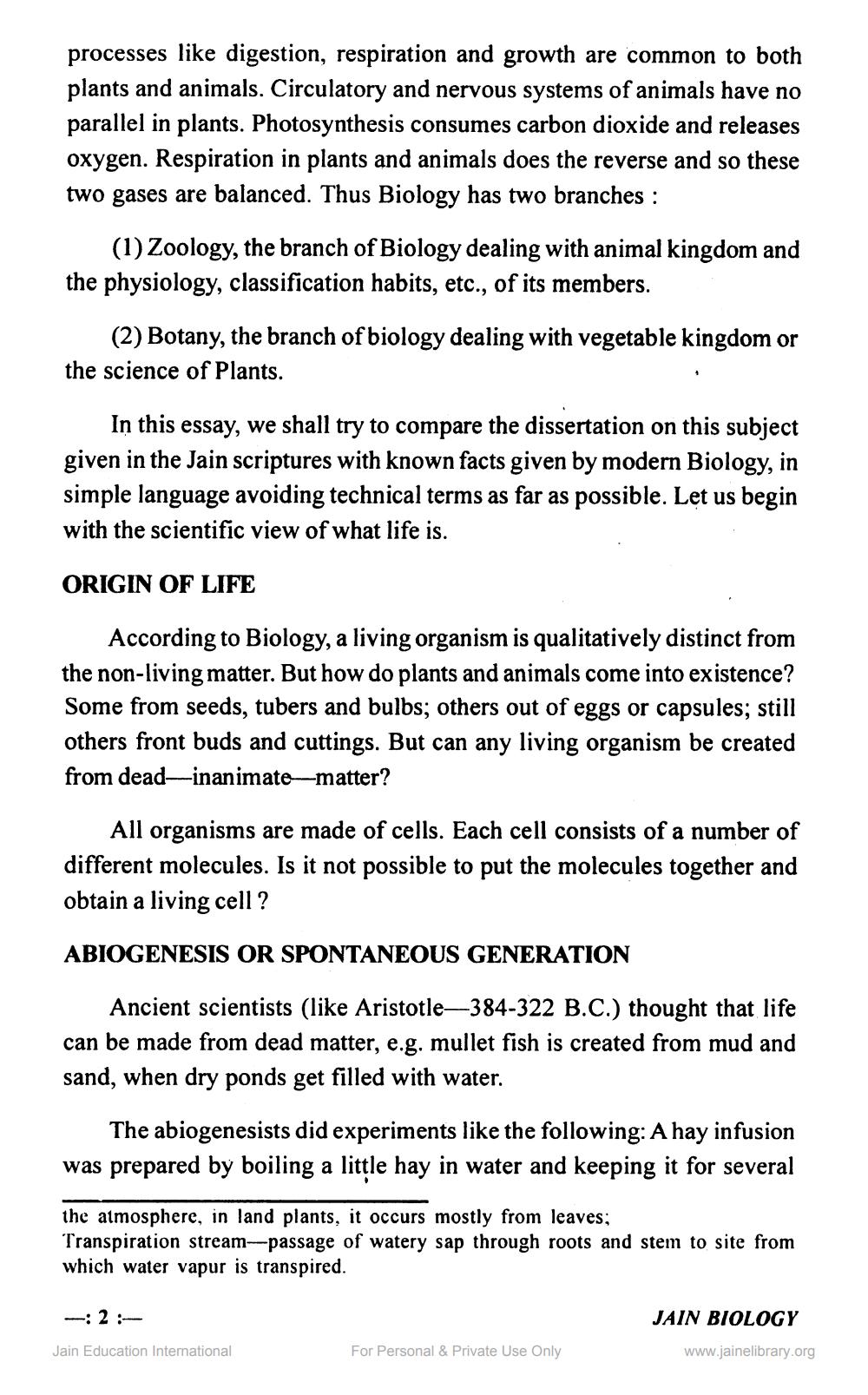________________
processes like digestion, respiration and growth are common to both plants and animals. Circulatory and nervous systems of animals have no parallel in plants. Photosynthesis consumes carbon dioxide and releases oxygen. Respiration in plants and animals does the reverse and so these two gases are balanced. Thus Biology has two branches :
(1) Zoology, the branch of Biology dealing with animal kingdom and the physiology, classification habits, etc., of its members.
(2) Botany, the branch of biology dealing with vegetable kingdom or the science of Plants.
In this essay, we shall try to compare the dissertation on this subject given in the Jain scriptures with known facts given by modern Biology, in simple language avoiding technical terms as far as possible. Let us begin with the scientific view of what life is.
ORIGIN OF LIFE
According to Biology, a living organism is qualitatively distinct from the non-living matter. But how do plants and animals come into existence? Some from seeds, tubers and bulbs; others out of eggs or capsules; still others front buds and cuttings. But can any living organism be created from dead-inanimate-matter?
All organisms are made of cells. Each cell consists of a number of different molecules. Is it not possible to put the molecules together and obtain a living cell?
ABIOGENESIS OR SPONTANEOUS GENERATION
Ancient scientists (like Aristotle-384-322 B.C.) thought that life can be made from dead matter, e.g. mullet fish is created from mud and sand, when dry ponds get filled with water.
The abiogenesists did experiments like the following: A hay infusion was prepared by boiling a little hay in water and keeping it for several
the atmosphere, in land plants, it occurs mostly from leaves; Transpiration stream-passage of watery sap through roots and stem to site from which water vapur is transpired.
-2:
Jain Education International
For Personal & Private Use Only
JAIN BIOLOGY www.jainelibrary.org




